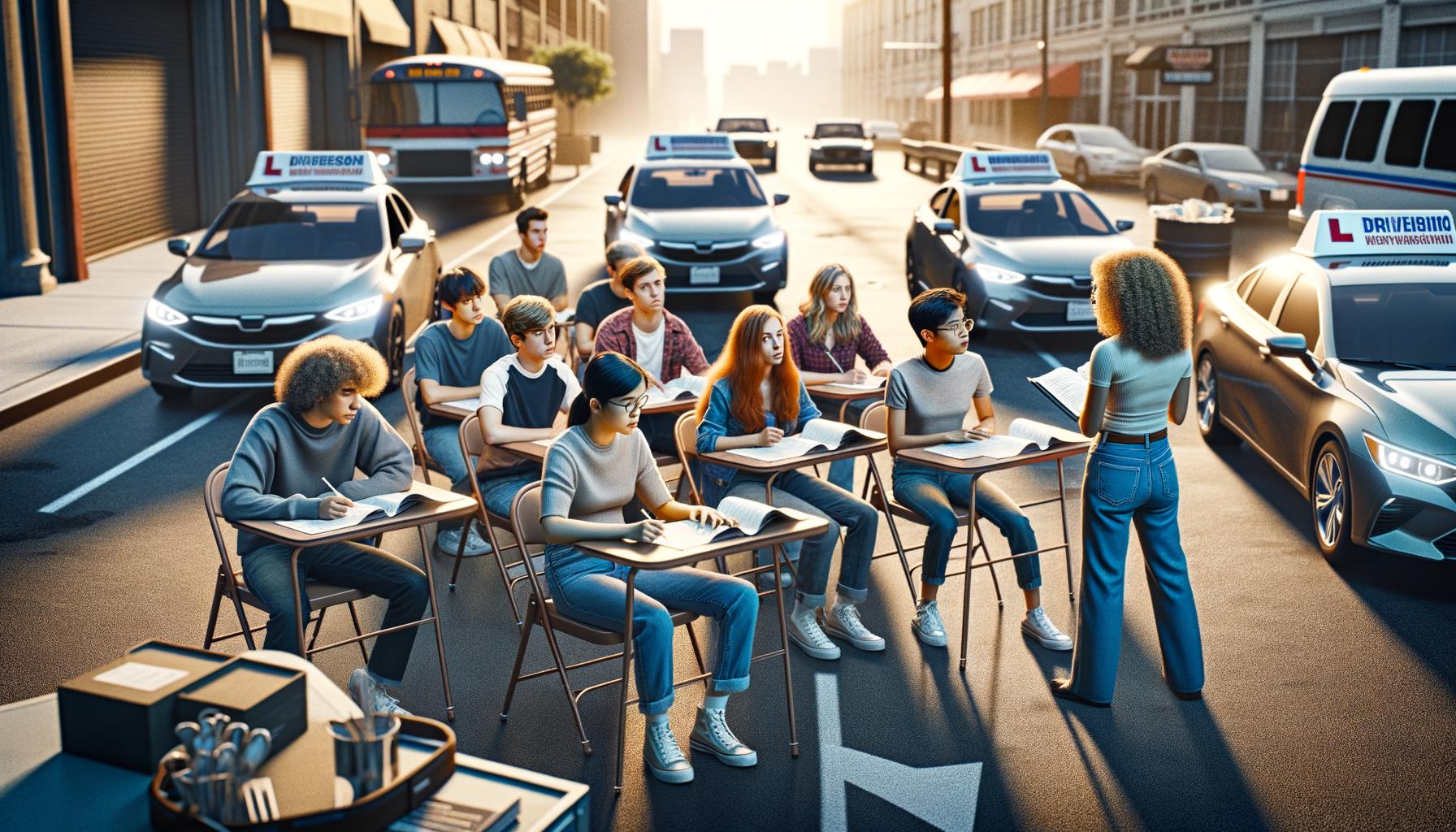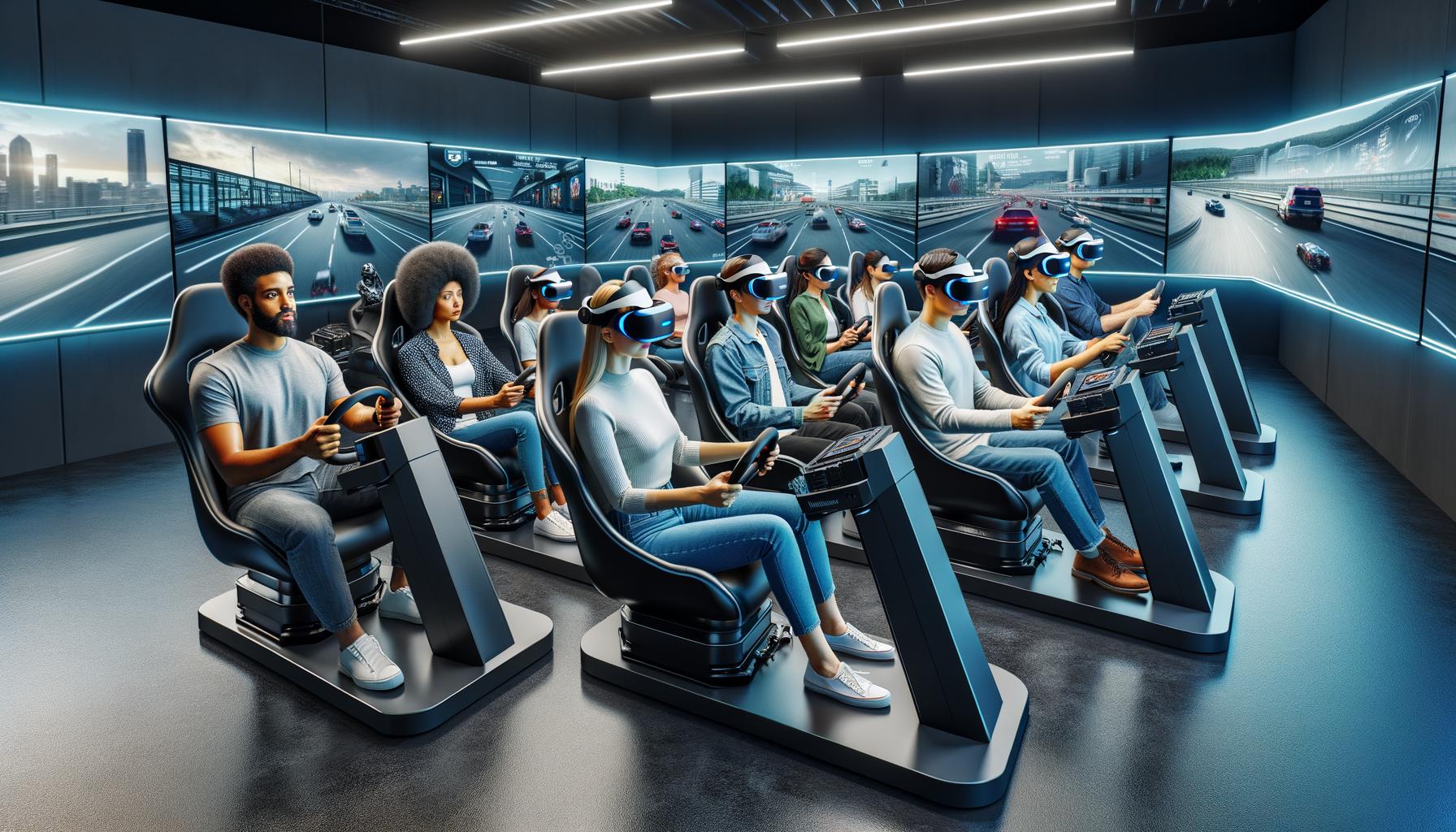How Old Do You Need to Be to Learn to Drive?
Learning to drive is a milestone many teenagers eagerly anticipate. At The Wiser Driver Driving School, we often hear the question: “How old do you need to be to learn to drive?”
The answer isn’t as straightforward as you might think. Age requirements for driving vary across the United States, with each state setting its own rules and regulations.
What Age Can You Start Learning to Drive?
The age at which you can start learning to drive in the United States varies significantly from state to state. This variation reflects different approaches to balancing safety concerns with the need for young people to gain independence and mobility.
Learner’s Permit Age Requirements
The legal driving age in the United States typically ranges between 16 and 18 years old, with each state having the autonomy to set its own requirements. This applies to full licensure, while learner’s permits may be available at younger ages in some states.
Supervised Driving Practice
After a teen obtains a learner’s permit, they must complete a certain number of supervised driving hours before they can apply for a provisional or full license. The required hours typically range from 40 to 60, with some states mandating additional nighttime driving practice. During this period, a licensed adult (usually 21 years or older) must be in the vehicle at all times.
Full License Age Requirements
The age at which a teen can obtain a full, unrestricted license also varies. In some states, like North Dakota and South Dakota, teens can get a full license at 16. However, most states have implemented graduated licensing systems that have been shown to be effective in achieving safe independent driving and reducing young driver fatal crashes.

States with stricter age requirements and longer supervised driving periods tend to have lower teen crash rates. This underscores the importance of thorough preparation and experience before independent driving.
Impact of Driver’s Education
Many states offer incentives for completing driver’s education courses. These can include reducing the required supervised driving hours or allowing teens to obtain their learner’s permit or license at a younger age. For instance, in Georgia, teens who complete a state-approved driver’s education course can get their license at 16, while those who don’t must wait until 17.
Enrolling in a comprehensive driver’s education program (regardless of your state’s requirements) provides crucial skills and knowledge for safe driving. The Wiser Driver Driving School offers state-required courses and personalized driving lessons to help new drivers meet legal requirements and develop essential driving skills.
As we move forward, it’s important to understand that while age requirements provide a general guideline, individual readiness for driving varies. Let’s explore the Graduated Driver Licensing (GDL) System, which plays a significant role in shaping the learning process for new drivers across the United States.
How the Graduated Driver Licensing System Works
The Three-Stage Process
The Graduated Driver Licensing (GDL) system forms the foundation of modern driver education in the United States. This system provides new drivers with a structured approach to gain driving experience while minimizing risks. Studies have found that the GDL program in New Zealand resulted in a sustained 7%-8% reduction in teen driver crash injuries.

The GDL system typically consists of three stages:
- Learner’s permit
- Intermediate or provisional license
- Full license
During the learner’s permit stage, new drivers must practice with a licensed adult supervisor. The intermediate stage allows independent driving but imposes restrictions (such as limits on nighttime driving and the number of passengers). The full license stage grants unrestricted driving privileges.
State-Specific Requirements
GDL requirements vary significantly across states. For example, California mandates a minimum six-month learner’s permit stage, and teens must complete 50 hours of supervised driving (including 10 hours at night). Texas, on the other hand, requires a minimum of 30 hours of supervised driving (with 10 hours at night).
Some states have implemented unique requirements. New Jersey, for instance, requires provisional license holders to display a red decal on their license plates to identify them as new drivers. This policy (known as Kyleigh’s Law) aims to help law enforcement officers enforce GDL restrictions more effectively. The law marked its 10-year anniversary in 2020.
Adapting to Individual Needs
While the GDL system provides a structured framework, it’s important to recognize that every new driver progresses at their own pace. Some may feel ready to move through the stages quickly, while others might benefit from additional practice time.
Many driving schools (including The Wiser Driver Driving School) tailor their instruction to meet individual needs within the GDL framework. Experienced instructors can help new drivers navigate the complexities of the GDL system while ensuring they develop the skills and confidence necessary for safe, independent driving.
As we consider the GDL system’s role in shaping new drivers’ experiences, it’s essential to examine the factors that influence the right age to start driving. These factors extend beyond legal requirements and play a significant role in a new driver’s readiness for the road.
What Factors Determine Driving Readiness?
Emotional Maturity and Decision-Making Skills
Emotional maturity plays a key role in determining driving readiness. A study demonstrates that the adolescent brain continues to mature well into the 20s. This ongoing brain development impacts a young driver’s ability to make split-second decisions on the road.

Students who demonstrate better emotional control and decision-making skills often progress more quickly through driving programs. Parents and guardians can assess a teen’s readiness by observing how they handle stress, follow rules, and make decisions in other areas of life.
Physical Coordination and Reaction Time
Physical coordination and reaction time are equally important for safe driving. A study by the National Highway Traffic Safety Administration (NHTSA) found that novice drivers have slower hazard detection times compared to experienced drivers. This difference can prevent accidents.
To improve these skills, aspiring drivers should engage in activities that enhance hand-eye coordination and reaction time. Video games that simulate driving scenarios can be effective tools. Additionally, sports activities can help develop the physical skills necessary for safe driving.
Responsibility and Commitment to Learning
Learning to drive requires significant time and a willingness to absorb new information. The American Driver and Traffic Safety Education Association (ADTSEA) recommends that novice drivers have at least 30 – 50 hours of supervised driving, of which 10 hours must have been done at night. This level of commitment demands responsibility and dedication.
Students who approach driving education with a serious attitude and a willingness to learn often become safer, more confident drivers. Parents can gauge their teen’s readiness by assessing their performance in school, their ability to keep commitments, and their overall sense of responsibility.
Individual Differences in Readiness
While age requirements provide a general guideline, individual factors offer a more comprehensive picture of a person’s readiness to drive. Some teens may be ready to start driving at the minimum legal age, while others might benefit from waiting a bit longer.
Driving schools (such as The Wiser Driver Driving School) can help assess an individual’s readiness and provide tailored instruction to address specific areas of improvement. This personalized approach ensures that new drivers develop the skills and confidence necessary for safe, independent driving.
Final Thoughts
The question of how old to learn to drive lacks a universal answer. Age requirements for learner’s permits and full licenses differ across states, typically ranging from 16 to 18 years old. The Graduated Driver Licensing system offers a structured approach to help new drivers gain experience safely through its three-stage process.

Age represents only one factor in determining driving readiness. Emotional maturity, decision-making skills, physical coordination, and commitment to learning all play important roles. Some teens may start driving at the minimum legal age, while others might need additional time and preparation.
Early driver education provides significant advantages. The Wiser Driver Driving School offers comprehensive programs to help new drivers develop skills and confidence for safe, independent driving. Our experienced instructors provide personalized instruction tailored to each student’s needs (helping them navigate the complexities of the GDL system and beyond).
















































